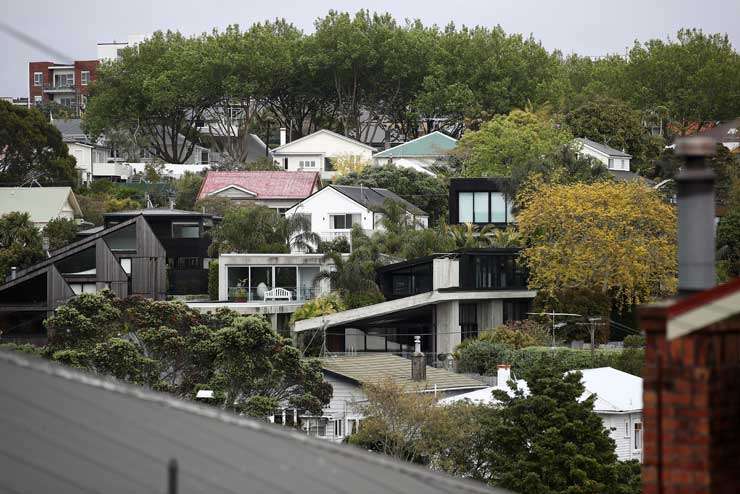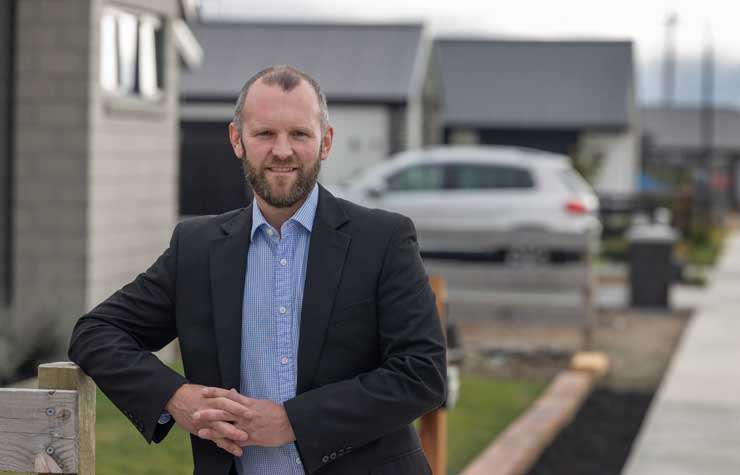Auckland homeowners have a psychological love affair with CVs, which help set the rates but are hardly worth the paper they are written on when it comes to buying and selling houses, according to experts spoken to by OneRoof.
James Wilson, director of valuation at Valocity, OneRoof's data partner, says CVs are out of date the moment they are released. Auckland's latest CVs, out on Tuesday March 8, were delayed by nearly two years and were set mid-last year in a heated market - but that market is now cooling.
Wilson says while an owner might get a buzz if their CV has gone up, it's likely everyone else's has too.
Start your property search
And there’s always the risk that the CV number isn’t quite what you anticipated – "You might feel a bit angry about the whole thing because you feel they've undercooked your property," Wilson says.
The key point is a CV is a tool used by councils to set the rates; it's not a market valuation of your property, Wilson says.
What is a CV?
CV stands for Capital Value and is often used interchangeably with the term Rateable Value (RV) or Council Value, says Wilson.
They are a statutory valuation created by the Rating Valuations Act and are designed to serve a specific purpose to help set the rates, and they are (usually) set once every three years.
The Capital Value is made up of the land value and the value of improvements, but Wilson and others say not to put much store by the value of improvements as your rates are barely affected by this.

Valocity director of valuations James Wilson: CVs were never designed as price guides. Photo / Fiona Goodall
The majority of CVs are set by way of mass appraisals, where valuers who work for councils research a number of sales over a time period and inspect, or at least drive by, those properties.
They are broken down into property types and analysed against how an area has changed in value with the data then applied to the other dwellings in the area.
In a way, CVs have been hijacked by the property market because they are a visible and free yardstick, says Wilson, but he stresses they were never designed to represent market value and should not be used to do that.
"Because they are available they have been adopted by everybody as a good yardstick but going hand in hand with that is that strong warning that they aren't designed to represent market value and they have a very specific and very narrow purpose under the Rating Valuations Act to assist the council with that rates strike."
Wilson highlights some myths about CVs:
Myth 1: They can be used to leverage further money from a bank
"They (banks) will have a range of other valuation tools or products they use to determine what the property might be worth in the open market, so from the use of Automated Valuation Models (AVMs) through to recommending the customer to engage a registered valuer to determine the value of the property."
Myth 2: They represent market value once every three years
By the time CVs come out the market may have moved up or down.
Myth 3: The value of improvements represents what is on the land, that is, the house or building
When setting CVs, the land value is valued as if the property is vacant, Wilson says.
"What that means is the value of improvements doesn't represent what's on the property at all and so the risk of that myth is that people use it for 'what should I set my insurance rebuild premium at?' and that becomes very risky because it doesn’t represent that at all.
"The warning to homeowners and would-be homeowners is don't get fooled into that trap that your value of improvements represents what's on the property."

Houses in the Auckland suburb of Grey Lynn, where the median CV in 2017 was now $1.425m. Photo / Fiona Goodall
Talk to your insurance company and use their tools to establish replacement value, or speak to a valuer, he says.
Myth 4: Every dollar your CV is higher or lower will be a dollar you pay in rates
"They are only a very small portion of how a council strikes rates and the more important thing is how much has your property increased in comparison to the average or the rest of the properties in a location.
"That relativity has a bigger bearing on how much rates you might pay compared to everyone else than the actual dollar amount."
Wilson says there's no real point in homeowners trying to keep CVs low, thinking they will pay less in rates than their neighbour, because any difference will be negligible.
What should CVs be used for in the property market? Absolutely nothing
Wilson says CVs should not be used by anyone in the property industry to give advice on what a property might be worth.
He points to Australia where most states and councils have a similar rates framework to New Zealand's but says unlike New Zealand many states do not make the information publicly available.
"One of the primary reasons is if you make it available it may impact on the market and, of course, it may adversely impact on individuals looking to buy or sell if they confuse it with representing market value."
What's a better measure of property value?
Wilson points to Automated Value Model tools on property websites that give an instant and free initial review of what a property might be worth.
"The benefit of that is you can then go and look at multiple properties at once and get a good gauge as to what a group of properties might be worth."
The AVM that OneRoof provides, which is powered by Valocity, is advanced and accurate enough for banks to use to base lending on.
"They use very powerful models to analyse and break down the property market and they use things like machine learning and techniques like that so they are very advanced."

CoreLogic chief economist Kelvin Davidson says CVs are simply a snapshot of the market at a point in time. Photo / Peter Meecham
These models update every day, he says, and are a great first tool for a buyer or seller to work out what a property is worth.
The next step is to talk to an agent or a valuer: "Definitely don't take the CV as gospel."
Kelvin Davidson, chief property economist at CoreLogic, has slightly more time for CVs as a rough guide to value, as long as where in the three-year cycle they are at is taken into account.
He lives in Selwyn, in Canterbury, which has just released new CVs.
"Selwyn's right now are current, they're probably not bad, but they do get of lesser value as you get further away from the rating date."
He also says AVMs, which CoreLogic also has, are more accurate and that CVs are just one component of other factors fed into the models.
"The days of only having a CV are gone. Most people I would imagine now get their valuation through the post and go 'oh, yep, cool, my property changed by 2% three years ago, but I already knew that because I look at websites.'"
CVs are simply a snapshot of the market at a point in time, he says, but even though AVMs are a more accurate gauge, in the end a property is only worth what someone actually pays for it.
Independent economist Tony Alexander says most people are interested in CVs - but most people aren't actively in the housing market looking to buy or sell.
He, too, says a CV could over or understate the value of a property. "Auckland market prices have fallen about five percent over the last couple of months so CVs represent more probably where the market was."
Do agents use CVs?
David Ding, a top Harcourts' agent for Glenfield on Auckland's North Shore, does not use CVs when doing appraisals.
CVs that come out this week could be higher than what the property fetches on the open market, he says, and it can take a year or two for a property to catch up to its CV.
Some vendors wait it out for new CVs to arrive in the hope they will push up the price of their property but they will probably be disappointed, he says.
After the new CVs of 2017, most properties sold for under their CV – the sale price didn't go over the CV until 2020, three years later.
Ding advises sellers to instead keep updated with what the neighbour's house sold for, and to keep an eye on REINZ statistics for the previous month.
"Compare apples to apples," he says.
When Ding provides an appraisal he starts with AVMs, such as the one on the OneRoof website, and checks out like for like.

Harcourts agent David Ding says it’s better to compare your home with others like it or what houses have sold for in your street. Photo / Fiona Goodall
"I compare three-bedroom with three-bedroom, crosslease with crosslease.
"I even compare weatherboard with weatherboard. I wouldn't compare plaster with brick because that's usually about $200,000 difference."
He also takes the condition of the property into account, from what the kitchen benchtop is like to how much the toilet cost.
"The cheap toilet comes with a small ring and it's lower. The expensive one comes with a bigger ring and it's higher, and I guess it's easier for the boys."
Ray White Remuera agent Steve Koerber uses CVs but only as a check, dropping them down in the list of importance below floor area and land size.
He has been fielding questions from vendors after CVs have started coming out this week, saying they are curious to see how the CVs are lining up with what houses have been selling for, Koerber says it's too early to tell.
"If the CV on a house changes from $1m to $2m you really don't know how that's going to relate to its actual value until we start seeing some sales coming through after the new CV is issued."















































































